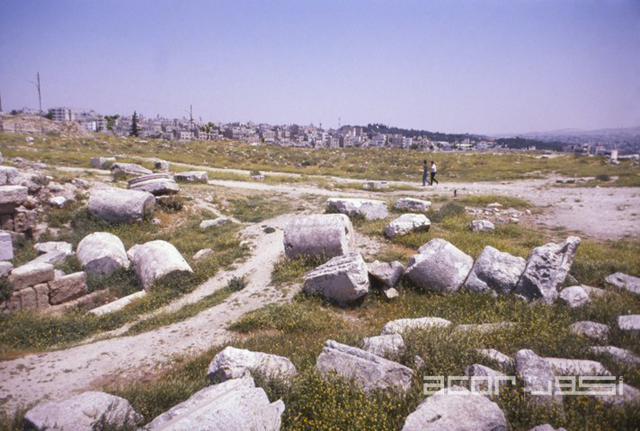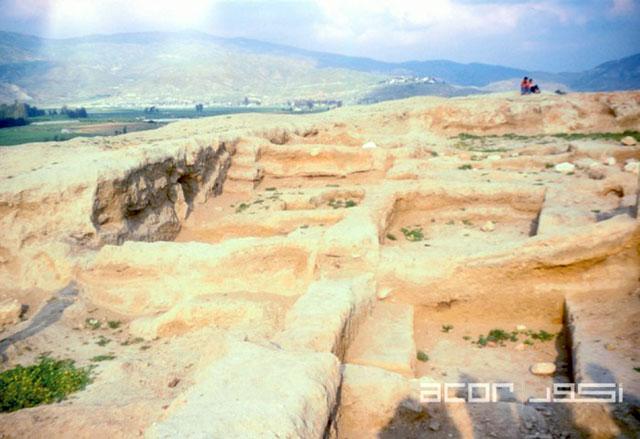You are here
Tell es-Sa’idiyeh: Unearthing history from Bronze Age to Sea Peoples presence
By Saeb Rawashdeh - Dec 13,2023 - Last updated at Dec 13,2023

Bronze wine strainer, juglet, drinking bowl, mixing bowl found at Tell es-Sa’idiyeh tomb dated from the Late Bronze IIB 1300-1200BC (Photo courtesy of Penn Museum)
AMMAN — Located in the central Jordan Valley, Tell es-Sa’idiyeh has a very long history of occupation, stretching from the Bronze Age to the Irone Age and the Roman -Byzantine periods. The site drew attention of a well-known American archaeologist Nelson Glueck (1900-1941), who visited Tell es-Sa’idiyehin 1943.
The results of the more recent seasons of excavations at Tell es-Sa’idiyeh have added new information to previously known facts about this Bronze Age site.
“Not only was the Lower Tell occupied during this period, but the presence of substantial quantities of pottery from Early Bronze Age suggests that the settlement extended over this area as well as no traces of defensive walls have been found at any point on the low mound,” noted Jonathan Tubb, who for many years lead the excavations of Tell es-Sa’idiyeh.
Tubb emphasised that the fact that the part of the settlement was not defended indicated a period of prosperity and peaceful coexistence between inhabitants of the site and their neighbours.
Further excavation located a few smaller settlements consisting of a single house and a farm.
Furthermore, during the later phases of the Early Bronze period the site was destroyed and abandoned on the lower hill.
“To what extent occupation of the Upper Tell continued after this destruction is impossible to determine at the moment. During the 13th–12th centuries BC, the Lower Tell became the site of an intensively used cemetery,” Tubb noted.
There is certain evidence to suggest that the population of Tell es-Sa’idiyeh during the 13th and 12th centuries BC contained a significant pre-Philistine Sea Peoples element, Tubb explained.
The Sea Peoples were a seafaring confederation of different ethnicities and tribes who raided ancient Egypt, and other parts of the Eastern Mediterranean during the Late Bronze Age Collapse (1200-900BC). Until now scholars argue what were caused of that event and how the urban civilisation experience a sudden destruction.
Historians and archaeologists are not certain about the origins of Sea Peoples, but they established that they came from western Anatolia, the Aegean and southern Europe. The impact of Sea Peoples for the Eastern Mediterranean was as big as the impact of Viking for the history of Western and Eastern Europe in the Early Mediaeval period.
“Features of the burials, such as the use of double pithos coffins, the high proportion of imitation Mycenaean vessels, the large numbers of metal artifacts, the use of bitumen and the disposition and treatment of many of the bodies, are supportive of such a view that Sea Peoples inhabited Tell es-Sa’idiyeh,” Tubb noted.
The cemetery was no longer used, and no clear evidence was found for defensive walls to replace the destroyed ones, Tubb said.
The later nature of the settlement (Iron Age) indicated that Tell es-Sa idiyeh became the industrial centre rather than a settlement, the scholar underlined.
Related Articles
AMMAN — British-American archaeologist Jack Green became interested in the archaeology of the Middle East and the Levant as he came across a
AMMAN — The post World War I period marks the beginning of scholarly research in Jordan.
AMMAN — The site of Tell Deir ‘Alla, in the central Jordan Valley, was a settlement during the 13th century BC and functioned as a town, not

















